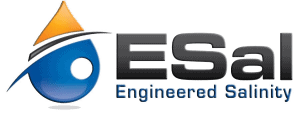Contrary to trending belief, we don’t see oil on the verge of disappearing in favor of alternative energy sources. In fact, it’s just the opposite. We’re on the cusp of what could be the most exciting frontier for oil yet: What we at Engineered Salinity (ESal) describe as The Oil Field Of The Future.
First, let’s review where we currently stand on the rate of new oil production.
- Standard processes have only produced 35% of reservoir oil, leaving behind another 65%.
After that standard production, what do oil and gas companies do? Usually, they walk away and drill a new oil field somewhere else. That’s leaving money on the table. A LOT of money.
The Energy Transition Is Now
That’s right. The energy transition isn’t happening 20 or 30 years from now. The time for preparation is happening as you read this. Oil companies that get ahead will operate like they are already working in The Oil Field Of The Future.

Why do oil companies need to operate as if they are in the future right now? Well, for good reason. Three of them, actually.
#1: The Oil Field Of The Future Is More Process-Driven
For one, the current process is leaving entirely too much oil in the reservoir clinging to rock, the time has come to develop a new pathway to increasing oil recovery significantly by getting a lot more of that stuck oil to release.
That’s why bringing about The Oil Field Of The Future doesn’t involve a change of location but a change of process.
The key lies in changing the water chemistry to consistently produce a state of neutral wettability – the “sweet spot” between oil and water where recovery is most ideal. In achieving neutral wettability, oil recovery won’t only be maximized but also be much faster and less expensive.
#2: The Oil Field Of The Future Is More Productive And Profitable
The Oil Field Of The Future is about getting much more out of every well you own.
Not just drilling and getting what you can, then moving on to another spot to drill. That’s highly inefficient and expensive. And if there’s one thing the oil and gas business cannot afford, it’s costs that take us soaring well beyond $100 per barrel.
Now, this is where some may automatically point to alternative energy sources as the solution. We’re not against wind, solar and other sources. Far from it. But such a dramatic switch is not only highly impractical but also entirely unnecessary when we can address the shortcomings of traditional recovery as oil still very much has a place as an energy source.
Many have seen oil itself as the problem when the problem is more about the methods of oil recovery. The real question should be two-fold:
1) What if we could get more oil out of existing wells? What would that do for our efficiency and, ultimately, our bottom line?
2) Knowing this outcome to be far more desirable, what kind of scientific methodology could help us arrive at such a result?
Now for the answer.
By utilizing a unique methodology to achieve neutral wettability, oil companies can achieve up to 50% in new oil production over every oil field. Up to 50% for less than $2 per barrel!
This doubling of historic oil production comes without drilling new wells, building new pipelines or investing in new equipment.
Do the math and you start to get a sense of the potential profit that comes from getting so much more out of an existing well, multiplied many times over. What will having up to 50% more production mean over 25 oil fields, 50 oil fields or even 100 oil fields?
For the 100 biggest oil fields in the US, this is transformative.

#3: The Oil Field Of The Future Is More Environmentally Friendly
We’ve already seen the price of oil skyrocket to get the same barrel, which results in additional drilling of new, conventional wells in more remote regions and unconventional wells. This can potentially create a great disturbance to sensitive environmental ecosystems.
The Oil Field Of The Future simply doesn’t have to be this way.
With technologies creating far higher recovery rates from an existing well, the continuous need for new drilling in new regions is limited, making this greater efficiency a win for the planet.
ESal Is The Best Avenue To Reach The Oil Field Of The Future
Utilizing our scientific methods at ESal to consistently achieve neutral wettability, we can accurately predict – within 1% to 2% – how much the rate of recovery and profit improve. You extend the life of old wells for months, years, even decades. All of which is possible right now.
Our technology creates a repeatable result that ESal has been able to replicate for many oil and gas companies.
It’s one thing to know about neutral wettability and its potential to release oil from rock. It’s another to actually crack the code with real methods in the field that generate tangible, precise results decades in the making. But Engineered Salinity has done it. In fact, we’ll prove it to you.
Let our team at ESal perform a risk-free test on one of your wells to show you so much more about what the future holds for it and, if necessary, what changes need to be made so you can potentially derive more oil, longevity and ensuing profit from the well.
Don’t walk away from one well to drill another before this conversation and test. It could be the most important and intelligent decision you’ve made for oil production in years. Schedule time with ESal by calling us at 307.760.9421 today.

